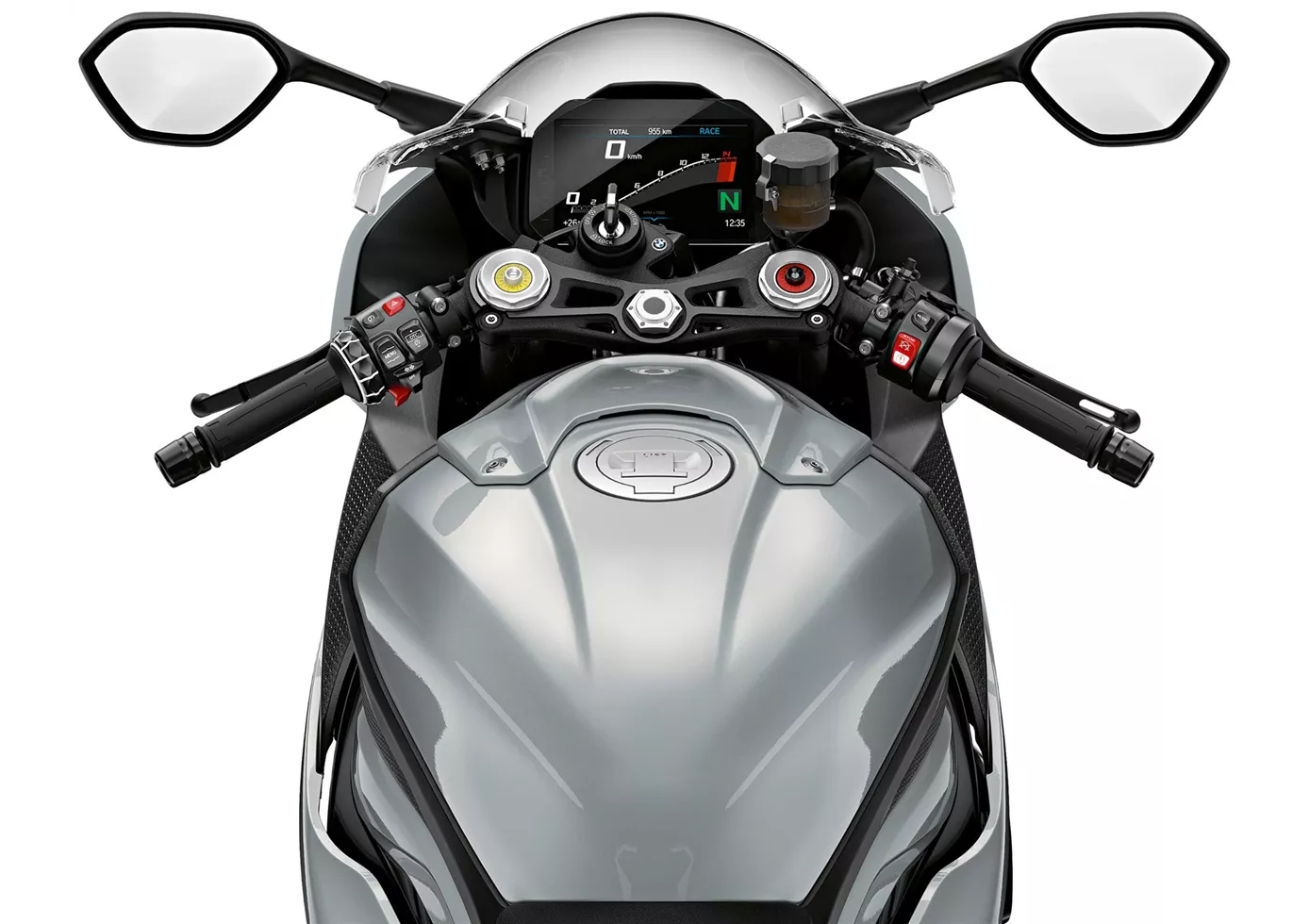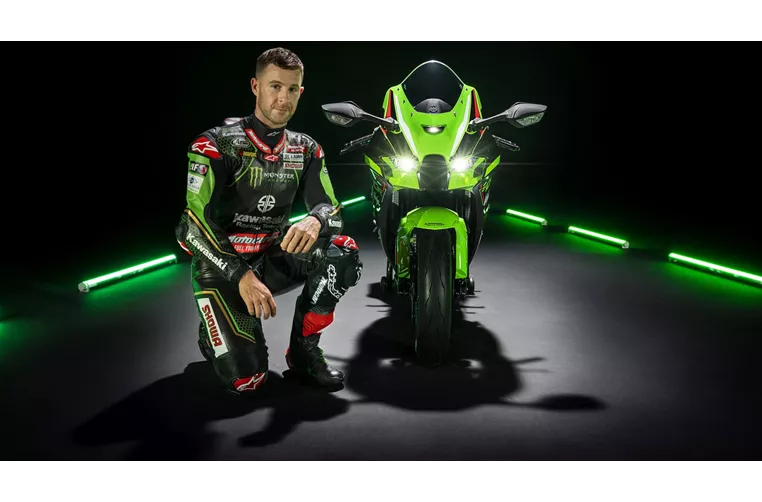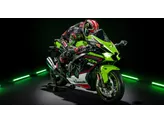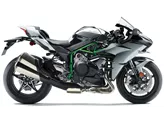Kawasaki Ninja ZX-10R 2021 vs. BMW S 1000 RR 2020

Kawasaki Ninja ZX-10R 2021

BMW S 1000 RR 2020
Overview - Kawasaki Ninja ZX-10R 2021 vs BMW S 1000 RR 2020
In terms of engine specifications, the Kawasaki Ninja ZX-10R 2021 and the BMW S 1000 RR 2020 both have inline engines with four cylinders and four valves per cylinder. However, there are some differences in bore and stroke measurements. The Ninja ZX-10R has a bore of 76 mm and a stroke of 55 mm, while the S 1000 RR has a bore of 80 mm and a stroke of 49.7 mm.
In terms of power, the Ninja ZX-10R has an engine power of 203 HP, while the S 1000 RR has a slightly higher engine power of 207 HP. Both bikes have a high compression ratio of 13, which contributes to their powerful performance. The Ninja ZX-10R has a torque of 114.9 Nm, while the S 1000 RR has a torque of 113 Nm.
When it comes to suspension, both bikes feature upside-down telescopic forks in the front and swing arm suspension with a monoshock in the rear. The Ninja ZX-10R has a front fork diameter of 43 mm, while the S 1000 RR has a slightly larger diameter of 45 mm. Both bikes offer adjustable compression, preload, and rebound settings for the front and rear suspension. The rear suspension of both bikes is made of aluminum.

Kawasaki Ninja ZX-10R 2021
In terms of chassis, both the Ninja ZX-10R and the S 1000 RR have aluminum frames. The Ninja ZX-10R has a trail measurement of 105 mm, while the S 1000 RR has a slightly smaller trail measurement of 93.9 mm.
When it comes to braking, both bikes feature double disk brakes in the front. The Ninja ZX-10R has a larger front disk diameter of 330 mm, while the S 1000 RR has a slightly smaller front disk diameter of 320 mm. Both bikes utilize radial technology for their front brakes.
In terms of dimensions and weights, both bikes have a front tire width of 120 mm and a rear tire width of 190 mm. The front and rear tire diameters are the same for both bikes at 17 inches. The wheelbase of both bikes is also similar, with the Ninja ZX-10R measuring at 1440 mm and the S 1000 RR measuring at 1441 mm. The seat height of the Ninja ZX-10R is 835 mm, while the S 1000 RR has a slightly lower seat height of 824 mm. The fuel tank capacity of the Ninja ZX-10R is 17 liters, while the S 1000 RR has a slightly smaller fuel tank capacity of 16.5 liters.

BMW S 1000 RR 2020
In terms of strengths, the Ninja ZX-10R is praised for its high-quality workmanship, strong components, high-revving and powerful engine, great wind protection with good aerodynamics, comfortable seating position even for tall riders, high-quality electronics package, powerful brakes, and well-balanced chassis. On the other hand, the S 1000 RR is commended for its very linear power delivery, wide rev range, and pleasant control. The ShiftCam technology in the S 1000 RR provides plenty of pressure in the lower rev range. It also has excellent Dynamic Damping Control (DDC) and a top-notch electronics package. The S 1000 RR is considered a harmonious overall package both on the road and on the racetrack.
In terms of weaknesses, the Ninja ZX-10R is criticized for its load change reactions in the partial load range, somewhat slow quickshifter, and a relatively small display. The S 1000 RR, on the other hand, is described as "characterless" compared to other bikes like the Aprilia and Honda. In direct comparison, the S 1000 RR lags behind on the spec sheet.
Overall, both the Kawasaki Ninja ZX-10R 2021 and the BMW S 1000 RR 2020 offer impressive performance, high-quality components, and advanced electronics packages. The choice between the two will ultimately depend on personal preferences and priorities.
Technical Specifications Kawasaki Ninja ZX-10R 2021 compared to BMW S 1000 RR 2020
Pros and Cons in comparison
Pros and Cons in comparison
Kawasaki Ninja ZX-10R 2021

Kawasaki offers a mature overall package with the Ninja ZX-10R in the 2021 model year, which with the new front end also really looks like 2021. The bike offers surprisingly good space for the rider and you feel comfortable in the saddle. The rev-happy engine leaves nothing to be desired - except perhaps more discipline in the part-load range. To make the project a success, Kawasaki relies on high-quality ingredients: Showa suspension, Öhlins steering dampers, Brembo brakes with 330 discs and high-quality electronics. Thanks to the good electronics and the superior engine, the Ninja ZX-10R even cuts quite a figure on country roads - as long as you are willing to suffer a little in terms of seating position due to the concept.
BMW S 1000 RR 2020

A real "all-rounder" superbike. The BMW knows how to play to its strengths both on the race track and on the country road. Thanks to variable camshaft control, the powerful engine is already convincing at the bottom end and accelerates harmoniously across the entire rev range, with plenty of power in every range. For the hobby pilot, the chassis certainly functions excellently in every situation, provides transparent feedback and offers many adjustment options. The seating position is sporty yet relatively comfortable. The electronics work very harmoniously without patronising the rider - TOP!
Price Comparison Avarage Market Price Kawasaki Ninja ZX-10R vs BMW S 1000 RR
There are a few key differences between a Kawasaki Ninja ZX-10R 2021 and a BMW S 1000 RR 2020. It takes less time to sell a BMW S 1000 RR with 68 days compared to 177 days for the Kawasaki Ninja ZX-10R. Since model year 2005 1000PS.de editors have written 51 reviews for the Kawasaki Ninja ZX-10R and 135 reviews for the BMW S 1000 RR since model year 2010. The first review for the Kawasaki Ninja ZX-10R was published on 1/11/2004 and now has more than 2,900 views. This compares to more than 4,000 views for the first review on BMW S 1000 RR published on 4/16/2008.






















